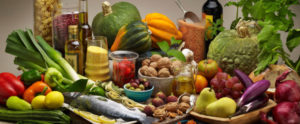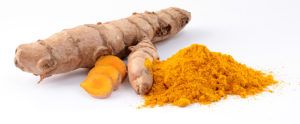 How much fiber is there in the different foods we eat? And how much should we eat? Recent posts (Where Do I Get That Beneficial Gut Bacteria? and A Special Gut Microbe) stressed the importance of eating dietary fiber for various health benefits and to feed the beneficial bacteria (such as Faecalibacterium prausnitzii) in our gut. Are there different types of fiber and does it matter?
How much fiber is there in the different foods we eat? And how much should we eat? Recent posts (Where Do I Get That Beneficial Gut Bacteria? and A Special Gut Microbe) stressed the importance of eating dietary fiber for various health benefits and to feed the beneficial bacteria (such as Faecalibacterium prausnitzii) in our gut. Are there different types of fiber and does it matter?
Currently the average American adult eats about 12 to 18 grams of dietary fiber daily. But the latest advice (from both National Academy of Sciences and Academy of Nutrition and Dietetics) is to eat over 20 grams of dietary fiber daily to about 35 grams daily, depending on weight. So a person eating a 2000 calorie daily diet should have about 25 grams of fiber daily. Their recommendation for children is that intake should equal age in years plus 5 g/day (e.g., a 4 year old should consume 9 g/day).
Good fiber foods are: fruits, vegetables, whole grains, legumes (beans), nuts, and seeds. But people eating a typical westernized diet are instead eating a high fat, high meat, highly processed food diet which neglects plant-based foods. Go look at the ingredient labels of favorite American foods and see that many don't have fiber or are low in dietary fiber (e.g., hot dogs, salami, candy, cookies, potato chips).
Dietary fiber or roughage is the indigestible portion of food derived from plants. There are two types of fiber: soluble and insoluble, and both should be eaten for good health because they benefit health in a number of ways.
Insoluble fiber doesn't dissolve in water and passes through the intestines (it provides bulking), while soluble fiber dissolves in water, and becomes a gel. Plant foods contain both types of fiber in varying degrees, depending on the plant's characteristics. For example, plums and prunes have a thick skin covering a juicy pulp. The skin is a source of insoluble fiber, whereas soluble fiber is in the pulp.
One can also take fiber supplements, but actual real foods have many more health benefits to them, and also provide a variety of fiber sources. Eating a variety of whole plant-based foods is beneficial in many ways, including feeding the variety of bacteria species in your gut. Remember that different bacteria need different foods, and so eating a variety of foods is best.
To increase your daily dietary fiber intake, first take a look at the amount of fiber in different foods. And then eat lots of fruits, vegetables, whole grains, legumes (beans), seeds, and nuts.
The following tables give approximate fiber amounts in some high fiber foods (NOTE: different sources give slightly different numbers):
| Fresh & Dried Fruit | Serving Size | Fiber (g) |
| Apples with skin | 1 medium | 5.0 |
| Apricot | 3 medium | 1.0 |
| Apricots, dried | 4 pieces | 2.9 |
| Banana | 1 medium | 3.9 |
| Blueberries | 1 cup | 4.2 |
| Cantaloupe, cubes | 1 cup | 1.3 |
| Figs, dried | 2 medium | 3.7 |
| Grapefruit | 1/2 medium | 3.1 |
| Orange, navel | 1 medium | 3.4 |
| Peach | 1 medium | 2.0 |
| Peaches, dried | 3 pieces | 3.2 |
| Pear | 1 medium | 5.1 |
| Plum | 1 medium | 1.1 |
| Raisins | 1.5 oz box | 1.6 |
| Raspberries | 1 cup | 8.0 |
| Strawberries | 1 cup | 4.4 |
| Grains, Beans (Legumes), Nuts, Seeds | Serving Size | Fiber (g) |
| Almonds | 1 oz | 4.2 |
| Black beans, cooked | 1 cup | 13.9 |
| Bran cereal | 1 cup | 19.9 |
| Bread, whole wheat | 1 slice | 2.0 |
| Brown rice, dry | 1 cup | 7.9 |
| Cashews | 1 oz | 1.0 |
| Flax seeds | 3 Tbsp. | 6.9 |
| Garbanzo beans, cooked | 1 cup | 5.8 |
| Kidney beans, cooked | 1 cup | 11.6 |
| Lentils, red cooked | 1 cup | 13.6 |
| Lima beans, cooked | 1 cup | 8.6 |
| Oats, rolled dry | 1 cup | 12.0 |
| Quinoa (seeds) dry | 1/4 cup | 6.2 |
| Quinoa, cooked | 1 cup | 8.4 |
| Pasta, whole wheat | 1 cup | 6.3 |
| Peanuts | 1 oz | 2.3 |
| Pistachio nuts | 1 oz | 3.1 |
| Pumpkin seeds | 1/4 cup | 4.1 |
| Soybeans, cooked | 1 cup | 8.6 |
| Sunflower seeds | 1/4 cup | 3.0 |
| Walnuts | 1 cup | 5.0 |
| Vegetables | Serving Size | Fiber (g) |
| Avocado (fruit) | 1 medium | 11.8 |
| Beets, cooked | 1 cup | 2.8 |
| Beet greens | 1 cup | 4.2 |
| Bok choy, cooked | 1 cup | 2.8 |
| Broccoli, cooked | 1 cup | 4.5 |
| Brussels sprouts, cooked | 1 cup | 3.6 |
| Cabbage, cooked | 1 cup | 4.2 |
| Carrot | 1 medium | 2.6 |
| Carrot, cooked | 1 cup | 5.2 |
| Cauliflower, cooked | 1 cup | 3.4 |
| Cole slaw | 1 cup | 4.0 |
| Collard greens, cooked | 1 cup | 2.6 |
| Corn, sweet | 1 cup | 4.6 |
| Green beans | 1 cup | 4.0 |
| Celery | 1 stalk | 1.1 |
| Kale, cooked | 1 cup | 7.2 |
| Onions, raw | 1 cup | 2.9 |
| Peas, cooked | 1 cup | 8.8 |
| Peppers, sweet | 1 cup | 2.6 |
| Pop corn, air-popped | 3 cups | 3.6 |
| Potato, baked w/ skin | 1 medium | 4.8 |
| Spinach, cooked | 1 cup | 4.3 |
| Summer squash, cooked | 1 cup | 2.5 |
| Sweet potato, cooked | 1 medium | 4.9 |
| Swiss chard, cooked | 1 cup | 3.7 |
| Tomato | 1 medium | 1.5 |
| Winter squash, cooked | 1 cup | 6.2 |
| Zucchini, cooked | 1 cup | 2.6 |
The tables were from http://commonsensehealth.com/high-fiber-foods-list-for-a-high-fiber-diet/

 My last post
My last post  In the past year I keep coming across one special gut microbe: Faecalibacterium prausnitzii. This bacteria is considered beneficial and is one of the most prevalent intestinal bacterial species in healthy adults. The reduction of this bacteria in the gut (as measured by analyzing bacteria in fecal samples) is seen in several diseases, including Intestinal Bowel Disease (IBD). This bacteria has also been found to be anti-inflammatory. In other words, you really, really want a healthy population in your gut.
In the past year I keep coming across one special gut microbe: Faecalibacterium prausnitzii. This bacteria is considered beneficial and is one of the most prevalent intestinal bacterial species in healthy adults. The reduction of this bacteria in the gut (as measured by analyzing bacteria in fecal samples) is seen in several diseases, including Intestinal Bowel Disease (IBD). This bacteria has also been found to be anti-inflammatory. In other words, you really, really want a healthy population in your gut. Healthy women were followed during their pregnancies and postpartum, and it was found that vaginal microbial communities change over the course of pregnancy, and then really change postpartum. They also found differences in the predominant Lactobacillus bacteria species between the women. In this study it was found that Lactobacillus bacteria were most dominant during pregnancy, especially L. gaserii, L. crispatus, L. iners, and L. jensenii, and there were ethnic differences in the species. And they found that the vaginal microbiome changes postpartum, with bacteria becoming more diverse and the numbers of Lactobacillus dropping. The message here is that what are "normal and healthy" microbial communities can vary between women (in this study
Healthy women were followed during their pregnancies and postpartum, and it was found that vaginal microbial communities change over the course of pregnancy, and then really change postpartum. They also found differences in the predominant Lactobacillus bacteria species between the women. In this study it was found that Lactobacillus bacteria were most dominant during pregnancy, especially L. gaserii, L. crispatus, L. iners, and L. jensenii, and there were ethnic differences in the species. And they found that the vaginal microbiome changes postpartum, with bacteria becoming more diverse and the numbers of Lactobacillus dropping. The message here is that what are "normal and healthy" microbial communities can vary between women (in this study  For years there has been discussion about curcumin's anti-inflammatory, anti-bacterial, and anti-cancer effects, but more research is needed (some trials are going on now). Curcumin is a chemical compound found in turmeric. Turmeric is a member of the ginger family. It is used as a spice and is a common ingredient in Indian cooking, but also used in Middle Eastern and South Asian recipes.From Medical Xpress;
For years there has been discussion about curcumin's anti-inflammatory, anti-bacterial, and anti-cancer effects, but more research is needed (some trials are going on now). Curcumin is a chemical compound found in turmeric. Turmeric is a member of the ginger family. It is used as a spice and is a common ingredient in Indian cooking, but also used in Middle Eastern and South Asian recipes.From Medical Xpress;